- Administrator
- Albums and Singles
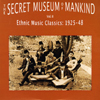 Before Sublime Frequencies began their plunge into the gritty and forgotten corners of global music, there was Pat Conte, a curmudgeonly postal employee and WFMU DJ from Long Island with a basement full of 78s. In the '90s, he curated an impressive series of rather unusual compilations named after an enigmatic and semi-legendary collection of photographs published in the 1930s. This is the second volume in the well-deserved vinyl reissue of the series and it is everything I could hope for: an achievement made even more remarkable by the fact that Conte had never traveled further than Canada when it was originally issued.
Before Sublime Frequencies began their plunge into the gritty and forgotten corners of global music, there was Pat Conte, a curmudgeonly postal employee and WFMU DJ from Long Island with a basement full of 78s. In the '90s, he curated an impressive series of rather unusual compilations named after an enigmatic and semi-legendary collection of photographs published in the 1930s. This is the second volume in the well-deserved vinyl reissue of the series and it is everything I could hope for: an achievement made even more remarkable by the fact that Conte had never traveled further than Canada when it was originally issued.
Yazoo/Outernational
Given the absurd scope of this double-album (two decades, the entire world), it should come as no surprise that the material assembled is eclectic in the extreme.Conte did not get mired down in unifying themes or in-depth examinations of any particular culture. He just took all of his best finds from the period and put them on an album with some brief background information.It's an approach that works extremely well, as these songs are almost invariably excellent, surprising, or both.It is not often that a Puerto Rican Christmas song can gracefully appear in company with a devotional hymn to Krishna or an ode to the chastity of Kazakhstan's young women, but Conte's "kitchen sink" celebration of all things exotic and forgotten has an internal logic that suits the material just fine.Pat applied a similar approach to his cryptic and colorful liner notes, treating quotes from Charles Darwin, conductor Leopold Stokowski, some random Eskimo, and Pindar ("All things hateful to Zeus in the earth and sea tremble at the sound of music.") with equal gravity.
Conte's taste and judgment are pretty unerring throughout these 23 songs, as even the pieces that I didn't particularly like (a French bagpipe dance, for example) tended to be either compelling or unlike anything else that I have heard before.I found two string-based Greek pieces to be especially revelatory and haunting (even before I read their morbid descriptions): both A. Kostis's finger-picked tale of a school fire and Rita Abatzi's kanonaki lament about being buried and forgotten sound impossibly sad and remarkably contemporary.It is apparently not a big leap from 1930s Greece to current Eastern- and raga-tinged guitar music at all— and those two artists definitely didn't leave much room for any improvement.More importantly, I had absolutely no idea before last week that I would ever have any interest in Greek traditional music and now that I do, I suspect I will have a very frustrating time finding more of it (especially this good).It is difficult to understate how far ahead of the curve Conte was in his efforts to unearth amazing and hopelessly obscure music from the distant past and how brilliantly he succeeded.Anyone with a taste for the exotic and esoteric will find a lot to enjoy here, and probably even find at least one artist to become mildly (or unhealthily) obsessed by.
Pat devoted decades to dusty scavenging, endless archiving, and near-impossible research to realize this project and it shows.Zeus would not find this hateful.
Samples:
- Rita Abatzi, "Prepei Na Skeptetai Kaneis"
- Cuartetto Iberia, "Zacataque"
- A. Kostis, "Kaike Ena Sholio"
Read More
- Administrator
- Albums and Singles

When it was first released in 1959, Alan Lomax described this album as "the wistful and tender magic of the young girl that is beyond art." Obviously, Lomax was a bit impartial since they had just completed an exhaustive song-collecting journey through the American South together, but it is impossible to think of a more apt description. Collins' appeal has always been the unwavering simplicity and purity that she brings to the well-worn songs that she loves, traits that are just as timeless and trend-proof as any traditional melody. Sweet England is not the crowning achievement of Shirley's influential discography, but its reissue makes its clear that her vision was firmly in place from the very beginning and that the passage of five decades has done little to blunt its impact.
Sweet England was recorded in a whirlwind two-day session in a house way back in 1958, when Shirley was just 22 years old.The session was a farewell present of sorts from Lomax, who was just about to head back to the US for yet another long-term song-scavenging expedition.At the time of the recording, Collins was still a bit new to the banjo, so a few other musicians were enlisted to back her.Despite Shirley's self-deprecating liner notes suggesting that the whole thing happened quite a bit sooner than she would have liked, she nevertheless managed to finish a whopping 37 songs over those 48 hours (the same session also produced the somewhat superior False True Love).There is definitely some justification for Collins' lukewarm enthusiasm, given how much she ultimately evolved, but both albums yielded some absolutely beautiful work and made an enormous impact on the nascent English folk scene, as instrumental accompaniment for folk music had yet to fully come into vogue.
Of course, the albums for which Collins is most revered came a bit later, such as her collaborations with her sister Dolly, Anthems in Eden, or Folk Routes, New Routes, but Shirley's voice was still beautiful and uniquely her own even at this early stage.Also, the quality of traditional songs ripe for reinterpretation was just as depthless in 1958 as it would be at any other time.Unfortunately, I am not entirely in love with the song selection on this particular album, as I don't like nonsensical refrains like "hey down, ho down, dare dare down" or comic pig noises– the "lighter, banal songs," as Shirley puts it.Most of the pieces in this vein were ones that Shirley learned from her mother when she was a child, so I can certainly understand their inclusion and their larger importance in the folk music tradition, but they were not fated to remain a part of her repertoire for long.Thankfully, there are also some great lovelorn ballads here that stand among her best work, particularly "Polly Vaughn" and "Barbara Allen."
Despite the fact that Collins was not quite at the height of her powers at this stage, I am quite fond of this "me and a banjo" era, as I feel that working with an entire band diluted her impact a bit.Anyone that feels similarly about Collins' oeuvre will certainly find some striking and intimate "singles" and alternative versions of later re-workings here to get excited about (like I did), but the curious should probably go elsewhere first.Fountain of Snow seems like probably the best overview for my taste, but every phase of her career has some wonders to offer.
Samples:
Read More
- Administrator
- Albums and Singles
 In 2005 Delia Gonzalez and Gavin Russom released Days of Mars, a suite of sprawling, futuristic soundscapes played on Gavin Russom’s home-built synthesizers and recorded live onto tape. While sparsely praised at the time, the album has held up remarkably well, enough so that DFA decided to press a single of a previously unreleased track culled from those sessions.
In 2005 Delia Gonzalez and Gavin Russom released Days of Mars, a suite of sprawling, futuristic soundscapes played on Gavin Russom’s home-built synthesizers and recorded live onto tape. While sparsely praised at the time, the album has held up remarkably well, enough so that DFA decided to press a single of a previously unreleased track culled from those sessions.
From the start, Gonzalez and Russom were unfortunately pegged as a revival act. That label may be apt, but it reduces what makes their work compelling. Days of Mars certainly owed much to earlier electronic music, especially the German "kosmische" artists of the '70s. Nonetheless, Gonzalez and Russom brought a powerful, dramatic sensibility that distinguished them from their influences. Now that younger groups such as Emeralds and Oneohrix Point Never are mining the same territory to slightly more critical acclaim, arguments against retro-futurism have, for the time being, abated somewhat. Yet it’s the quality of the music, and not a shift in the fashion cycle, that makes "Track 5" seem timely, even though it was made more than five years ago.
The piece begins with a trebly one-note pulse. Through the following twelve minutes, the pulse mutates, steadily gaining and losing notes. Subtle bass tones and rubbery keyboard melodies appear to fill the composition out until we, the listeners, are surrounded by a multitude of shifting patterns, dancing like sheets of windblown rain illuminated by neon lights. A guitar cuts-in mid-song, playing a simple three note-riff—its dialed back, slightly distorted sound blending in well with the electronic sounds swirling around it.
Although Delia and Gavin have ceased working together, "Track 5" will hopefully raise the group’s posthumous reputation. At least as far as one modest 12" single can do. For his part, Gavin Russom has continued to make innovative electronic music under the monikers Black Metoric Star and the Crystal Ark. What all three projects share is a meditative almost spiritual dedication to sound construction. Gonzalez and Russom’s music may seem at first rickety and coldly machinelike, but underneath everything is a continuous pulse that is undeniably human.
samples:
Read More
- Administrator
- Albums and Singles
 Adam Forkner’s second album for Kranky sees him further developing his already exquisite sound. Each of the four pieces on this album float in a way that lives up to the album’s title: thick cumulous clouds threatening to rain. The dreamy compositions are low key but utterly bewitching; the sinuous synth rhythms and ephemeral, indistinct vocals create a womb-like feeling of comfort. As such, New Clouds has been good these last few weeks for helping me forget a lot of tension.
Adam Forkner’s second album for Kranky sees him further developing his already exquisite sound. Each of the four pieces on this album float in a way that lives up to the album’s title: thick cumulous clouds threatening to rain. The dreamy compositions are low key but utterly bewitching; the sinuous synth rhythms and ephemeral, indistinct vocals create a womb-like feeling of comfort. As such, New Clouds has been good these last few weeks for helping me forget a lot of tension.
“Tuesday Rollers and Strollers” opens with densely layered instrumentation marked by large amounts of processing and long, extended loops. This can be quite tedious, as it is standard practice for the bedroom recording artist with no virtuosic talent, but Forkner pulls it off spectacularly. A whirlwind of rhythm guitar, unearthly vocals, and drumming provide the backdrop for countless guitar solos, which swoop down through the mix like eagles diving in for the kill.
The rest of the album takes on a more sedate vibe, but at no point does the quality drop. Forkner’s attention to minute details is evident throughout New Clouds. The gentle patter of percussion that opens “Major Spillage” develops slowly and methodically into a progression of sustained synthesiser notes, ghostly vocals, and a general feeling of wide open spaces. The transition across the track is, at first, barely perceptible. At some point I suddenly realized that the music had moved well beyond what I was expecting. Eventually the primitive percussion and drones of “All the Boogies in the World” are broken up by some intense electronic trickery, which makes for some seriously enjoyable headphone moments.
Forkner makes albums for people who listen to albums. Any of these pieces on their own is nice enough, but taken as a whole New Clouds is fantastic. Subtle nuances don't merely occur within each song; the way each track flows into the next works exceptionally well, too. Moreover, each piece has been finished off masterfully. It all sounds so rich and full; listening to it on my mp3 player did a great disservice to all Forkner’s work. This is an album that needs an hour put aside for proper listening. A good sound system only enchances the experence. Playing this on a sub-standard meidum means missing out on a subtle and blissful experience.
samples:
Read More
- Administrator
- Albums and Singles
 Steven R. Smith is one of the most fascinating guitarists and writers this country has. Along with talents like Glenn Jones, Jack Rose, and Ben Chasny, he has composed a remarkable and singular body of work grounded in the history and spirit of America (guts and all). After nearly 15 years and well over 30 albums Smith has composed one of his best records yet, one that approaches the greatness of Tableland. Economical and sharply focused, Cities plays out like the soundtrack to humanity's slow and sad funeral.
Steven R. Smith is one of the most fascinating guitarists and writers this country has. Along with talents like Glenn Jones, Jack Rose, and Ben Chasny, he has composed a remarkable and singular body of work grounded in the history and spirit of America (guts and all). After nearly 15 years and well over 30 albums Smith has composed one of his best records yet, one that approaches the greatness of Tableland. Economical and sharply focused, Cities plays out like the soundtrack to humanity's slow and sad funeral.
I don't mean to suggest that Smith and Jones or Smith and Chasny have all that much in common musically, but they all produce distinctly American sounding music. What they write is married variously to folk and country traditions, the myth of the wild west, or American nature and mysticism. On Cities Smith focuses squarely on nature and myth, with an eye towards the reclamation of land and beauty lost. Beginning with "Cities in Decline," Steven paints a portrait of man as criminal and of nature as judge, jury, and executioner. A shifting drone made from a frayed violin sets the tone for the entire album and for the appearance of a descending guitar melody that imitates the opening song's title. With Smith we descend into a world set ablaze: skyline's burn in the distance, cities become unsafe, and the unsympathetic stillness of the wild offers itself as the only shelter from mankind's dread fate. Of course, it turns out to be a graveyard itself. Smith's style is so sharp and perfectly honed that vivid images jump out of the music and offer themselves instead of laying in wait for an adventurous listener. On Cities the power of impressionism is utilized to its fullest. Bright and clear melodies populate the record, but they are used to contrast the vast swathes of tonal color and smears of texture that make up most of the record. Where singable melodies and familiar song structures emerge, they do so quite strongly and with a great deal of emotional power. "Line to Line, Pole to Pole" is one such instance. The song lasts but a minute, but in that time Smith splits open his record and reveals a fragile beauty full of wonder, remorse, and fractured memory.
As it turns out, much of the album sounds like an imperfectly recalled memory. There are spots on the record where Smith's playing reaches for some unseen apex, but falls short and breaks down. It's as if his fingers can't quite remember what to do or as though they've become weak. On "The City Gate" a violin leads the action, but its typically brilliant tenor is rendered rough and feeble, like it would sound if a child were playing the melody but still learning how to draw the bow across the strings. Misremembered or misplayed phrases appear all over the record, but in a deliberate fashion. In other places, instruments sound distant and uncertain, as though the narrative being told is full of "maybes" and "I believes." And this is what I mean by Smith's playing being especially impressionistic: he's not worried about songs so much as he is about painting a picture or describing a scene. "The Road" is an example of him combining both approaches in the same song. A guitar with nylon strings walks over a simple organ melody and the crackling glimmer of Smith's electric accompaniments. The arrangement imitates the cadence of someone walking or stumbling down a path with a scorched and blistered plain providing the sad setting for this almost pathetic scene. The title and tone recall Cormac McCarthy's novel of the same name and I have to assume Smith is referencing it, even if unconsciously. It would make the perfect soundtrack to that destitute story.
Cities is both painful and pleasant, much in the same way as McCarthy's book. Small victories are won throughout the album, especially where simple beauty and awe burst through all the destruction and distortion. "All is One, One is None, None" closes the album on this note, where a kind of bittersweet reverence is intimated. A half-yelled, half-sung chorus of wordless notes is set beneath a buzzing wave of guitar noise and glinting harmony. As the song fades to nothing, a resigned quietude takes over and the bleak landscapes of Smith's mind appear to silence the possibility of saying anything more. There's no struggle and no pain in the music, just a quiet breath and a small feeling, like standing in the shadow of the world.
samples:
Read More
- John Kealy
- Albums and Singles
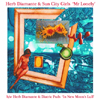 This download-only single combines a pair of Herb Diamante collaborations, the first with Sun City Girls and the second with the lesser known Diatric Puds. Neither song is particularly impressive, mainly due to the vocals but there is a quirkiness present that does make these two songs strangely attractive.
This download-only single combines a pair of Herb Diamante collaborations, the first with Sun City Girls and the second with the lesser known Diatric Puds. Neither song is particularly impressive, mainly due to the vocals but there is a quirkiness present that does make these two songs strangely attractive.
 
Diamante’s rendition of the Bobby Vinton classic "Mr. Lonely" sees his voice threaten to split in two as he forces a heavy vibrato onto his vocal chords to create an overly melodramatic take on a song already heavy with melodrama. The music for this song was originally released on the soundtrack album to Harmony Korine’s film of the same name and I feel it was much better without the addition of Diamante’s vocals. The hammy performance here destroys the beauty the Sun City Girls initially managed to wrangle from the song.
The second song on this single (is it really a b-side when it is two files on a hard drive?) is an original called "In New Moon’s Lull" recorded with Diatric Puds. The campy, ghoulish music is like a spacier version of The Cramps and sounds more like a novelty single from the '60s along the lines of "Monster Mash." Diatric Puds have tapped into the kitschy horror sounds of the 1960s horror soundtrack but, as much as I like the music, Diamante again puts me off. However, with repeat listening it is beginning to grow on me and out of the two songs, this is definitely the strongest.
 
Read More
- Administrator
- Albums and Singles
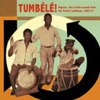 There has certainly been a flood of excellent African and Latin compilations released over the last few years, but Soundway seems to have outdone themselves (and everyone else) with this one. This is some of the hottest, wildest, and most unrelentingly rhythmic music ever set to wax.
There has certainly been a flood of excellent African and Latin compilations released over the last few years, but Soundway seems to have outdone themselves (and everyone else) with this one. This is some of the hottest, wildest, and most unrelentingly rhythmic music ever set to wax.
The French Caribbean of the 1960s was one of those improbably perfect and fertile musical climates that can never again be replicated: the musicians of Guadeloupe and Martinique were heavily exposed to African, Haitian, and Cuban styles, yet were operating in such sufficiently insular pockets that different regions developed their hybrid musical styles independently of one another. The result was an incredibly varied and convoluted distillation of "hot" jazz, biguine, rumba, compas, bélé, gwo-ka, calypso, and guaguanco into what eventually became known as tumbélé.
The album kicks off with frenzied biguine (“Jeunesse Vauclin”) by clarinetist Barel Coppet, who actually played with Duke Ellington and Count Basie in Paris during the 1950s. While Coppet may have the most conspicuously impressive musical past (at least to those of us outside the Caribbean) among the artist featured on the album, his talent is not unique here. Tumbélé! is teeming with urbane, virtuosic jazz musicians playing alongside propulsive rhythms informed by rural drumming styles that originated from slave plantations. Naturally, this collision of highbrow culture and large goatskin slave drums was viewed as scandalous and highly politicized at first, but it quickly caught on nonetheless (presumably because it is awesome).
It is difficult to pick favorites from such a uniformly solid collection, but the surprisingly minimal gwo-ka “Ti Fi La Ou Té Madam'” by Anzala, Dolor & Vélo is hard to top due to its relentless deep African percussion, catchy call and response vocals, and wild saxophone improvising. Other standouts include the sensuously shuffling “Jean Fouillé, Pie Fouillé,” the sizzling calypso of “Cocas-La,” and the weird surf guitar and “crazed Haitian organ” of “Jet Biguine.”
The only minor grievance I have with Tumbélé! is that there is so much similarly propulsive material that it is somewhat overwhelming to take in one sitting. There is literally no filler included, but a couple more slow and sultry tracks would have been welcome to break-up the unrelenting dance frenzy a bit. Essentially, however, this is an absolutely great album and truly impressive feat of musicology (even though it confronts me with the unfortunate realization that people in Fort-de-France and Pointe-à-Pitre got to experience nightlife at a level that I cannot even begin to comprehend or hope to replicate).
Samples:
- Anzala, Dolor & Vélo, “Ti Fi La Ou Té Madam'”
- Barel Coppet et Mister Lof, “Jeunesse Vauclin”
- Raphaël Zachille, “Manzè Mona”
Read More
- Administrator
- Albums and Singles
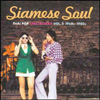 This follow-up to 2008’s beloved Shadow Music of Thailand ambitiously expands the scope of its predecessor to cover three decades of Thai pop in Sublime Frequencies’ characteristically non-comprehensive and freewheeling fashion. As expected, the result is yet another exotic, raucously fun, and thoroughly kitschy classic.
This follow-up to 2008’s beloved Shadow Music of Thailand ambitiously expands the scope of its predecessor to cover three decades of Thai pop in Sublime Frequencies’ characteristically non-comprehensive and freewheeling fashion. As expected, the result is yet another exotic, raucously fun, and thoroughly kitschy classic.
Siamese Soul is the latest dispatch from the indefatigable Mark Gergis’ life of obsessive culture-scavenging and tireless travel. Compiled from a mountain of forgotten cassettes and records acquired throughout journeys across rural Thailand, this album is less kooky than Thai Pop Spectacular and covers a wider variety of artists than Shadow Music, though placing a firm emphasis on both funkiness and soulfulness. The omnipresent horns and funky bass lines will be quite familiar to Western ears, but they are transformed into something wholly bizarre (and oft-excellent) by unusual instrumentation, odd melodies, Eastern percussion, and a host of seriously intense vocalists.
While the entire album is strong from start to finish, I was most struck by the two contributions from Ubon Pattana with Surin Paksiri. Very little information is given about them (one is a Sarawan Dance and the other is a story about a tribewoman), but both feature sleepy hypnotic rhythms, hazy, drugged-out instrumentation, and captivating and impassioned vocals from Angkana Khunchai. I was also quite fond of Kwan Jai & Kwan Jit Sriprajan’s “E-Saew Tam Punha Huajai” (Advice Column For Love Troubles”), which features some rather cathartic and stunning vocals that seem totally disproportionate to its subject matter (it is purportedly a teasing song about a woman who loves three generations of men). Incidentally, this compilation would still be noteworthy for sheer baffling eclecticism of subject matter even if the accompanying music was not so striking: while the fifteen songs are largely about relationships, they also cover a hunter’s karmic comeuppance, the superiority of breast milk to alcohol, frogs, and the unconditional love one receives from one’s bong. The song about frogs even features some disorienting field recordings of the titular amphibians that (inadvertently?) transform a relatively straightforward funk jam into something approaching outsider psychedelia.
Naturally, the punky smash-and-grab nature of this compilation precludes any sort of rigorous or informative liner notes, though there are quite a few charming period photos included. Gergis and co-compiler Alan Bishop are (quite obviously) not from Thailand and I suspect that finding background information on these artists would be a daunting endeavor for even a native. Fortunately, the duo’s lack of academic discipline or Thai fluency is more than compensated for by their enthusiasm and excellent taste. Siamese Soul is a raw, fun, and enigmatic party of an album and there is literally no one else that would have found and disseminated these songs.
Samples:
- Daw Bandon, “Bong Ja Bong”
- Ubon Pattana with Surin Paksiri, “Lum Sao Phutai Rum Pan”
- Teun-Jai Boon Praraksa, “Ha Fang Kheng Kan”
Read More
- Lucas Schleicher
- Albums and Singles
 The far off screaming of a tortured mass inaugurates Nightmares' 7" EP, sending a chilly wave of numbing synthesizer noise out into the world. Jonathan Canaday, David Reed, and Mark Solotroff's work together is as severe and indomitable as the product of their solo productions might suggest. Though not as frightening as their namesake implies, Nightmares' noise is oppressive and dense and more than a little uncomfortable.
The far off screaming of a tortured mass inaugurates Nightmares' 7" EP, sending a chilly wave of numbing synthesizer noise out into the world. Jonathan Canaday, David Reed, and Mark Solotroff's work together is as severe and indomitable as the product of their solo productions might suggest. Though not as frightening as their namesake implies, Nightmares' noise is oppressive and dense and more than a little uncomfortable.
Bloodlust!/Fatal Beliefs/Malsonus
Of the three releases from Nightmares this year, their 7" EP is the shortest and, for that reason, most forgiving recording. Their brevity is about all that makes these two songs tolerable. Both are filled with scores of sickly synthesizer tones and hissing noise, which together induce a claustrophobic tension and a nauseating sense of vertigo. Enjoyable only to the extent that discomfort can be, "Floating Above the Tracks" and "We Were Melded Together" do not allow for silence nor relief. Though there are spaces between the sounds and the band avoids creating an onslaught of pure noise, not one second goes that isn't tattooed by menace. Whether atonal pockets of sound are bubbling up in the background or long, obvious screeches of phased metallic noise are ripping through the foreground, I always feel pressed beneath the weight of Nightmares' unremitting electronics. The density they achieve isn't the result of stereo-filling distortion, but the accomplishment of psychological dread and volume. On the one hand, much of what is oppressing about each song can be found in how one reacts to the band's abstractions.
Whether or not I was intended to hear people screaming or to imagine the extent of infinite space while listening, I do hear and imagine those things and both cause some exciting reactions. I'm never quite scared by what I hear, but what's implied is enough to keep me on guard, always guessing what might be around the next corner. On the other hand, both songs exhibit the kind of spaciousness I'd typically associate with ambient music. The songs aren't so congested that I can't hear events when they happen. All the dissonant tones that pop up and wobble through the songs are thus able to flex their muscle to the fullest extent. Because of this sharp production and clarity I can make sense of what's happening both in the noise and inbetween its various instantiations. But, every moment is perverse and unfamiliar and haunted by an eternal horizon. Canaday, Reed, and Solotroff convincingly portray a threat out there somewhere, just beyond where you and I can see, but they never reveal it. So when the needle reaches the end of the record and the music stops, I'm almost a little too happy to put the record back in its sleeve. I don't want to know what might happen were the record to keep going.
Read More
- Administrator
- Albums and Singles
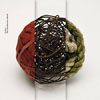 Although specified as a double EP, this release is more of an album split into two distinctly different sets, each of which showcase a specific element of Clare Adrienne Cameron Hubbard’s sound. The first set of tracks are sparse acoustic and vocal pieces that have a more intimate sound while the second adds in a significant amount of digital textures and processing to give an entirely different character. While both differ, there is a consistent intimacy that pervades both sets.
Although specified as a double EP, this release is more of an album split into two distinctly different sets, each of which showcase a specific element of Clare Adrienne Cameron Hubbard’s sound. The first set of tracks are sparse acoustic and vocal pieces that have a more intimate sound while the second adds in a significant amount of digital textures and processing to give an entirely different character. While both differ, there is a consistent intimacy that pervades both sets.
The first disc, No Man’s Land, is a rustic, spacious set of songs that mostly feature only voice and acoustic guitar, though roughly half of the tracks are introduced by a passage of field recordings to give a greater sense of the bucolic isolation that the music conveys figuratively. Both "In a Garden Barely Looked At" and "The Brunt of Every Winter" focus on simple acoustic guitar and Hubbard’s gentle, yet strong vocals, with subtle synthetic accompaniment and double tracked harmonious vocals at times. These two feature almost literal field recording elements, the former birds and rain, while chilling, howling wind introduces the latter.
Both "Kate” and “Sons of the Hounds" strip the formula down even more, leaving out the field recordings to simply leave the intimate guitar and vocals, like being in the room during the performance rather than just listening to a digital replication of it. The closing "The Old Ones Go First" foreshadows what waits on the other disc with its industrial field recording sounds, fragments of communication and voices out of reach undercutting the guitar and vocals.
The second set of tracks, Into The Dog-Dayed Night doesn’t completely change the sound but instead puts layers of digital treatment and effects on top: Hubbard’s voice and guitar are mostly still present, but accompanied by a multitude of synthetic sounds and collages. "In the Long Afternoon" really just adds some erratic piano playing, but reverberated in such a way that it sounds like the entire piece is being played loudly from deep inside a cave. The title track also maintains the same core sound, but glossed over with a thin reverb that makes the song sound like its coming from some nearby, but unspecified source.
"Day Break" has far more in the way of electronic elements, with delicate electronic piano and bitcrushed digital sounds creating a brittle collage of synthetic sounds, which on the surface sound completely disparate but work beautifully when synchronized. "Old Cat" is even more electronic, with a rhythm that sounds like a Casio keyboard sequence played off an old cassette that’s been left to rot for years. The rhythms of "Highways in the Deathlight" are matched with frail textures that match the skittering delayed clicks beautifully. The closing "The Cold Stark North East" drops much of the digital sound to focus on voice and piano, setting the sonic palette to go back to the first disc in an endless cycle.
While the two discs that make up this release are quite different on the surface, at their core they are both variations on the same themes of isolation, memories, and escape. The more acoustic based tracks have that same sense of intimacy that artists such as Jessica Bailiff have conjured before, but Caethua maintains a singular identity all her own. Credit should also be given to the Preservation label for its beautiful presentation: each disc is in a sleeve with a mini lyric sheet, all of which is bound into a multi-layered booklet which, though fragile, is beautiful.
samples:
Read More
- Administrator
- Albums and Singles
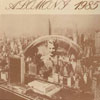 Possibly deemed too weird to exist upon its original release in the late 1970s, this mysterious LP has been given a second chance in a more modern world with this limited release, surely motivated by Julian Cope’s outspoken love of it. Some 30 years later, this CD issue is still a difficult prospect, combining early krautrock experimentations, brain-damaging blues forays, and a healthy dose of surrealistic psychedelia.
Possibly deemed too weird to exist upon its original release in the late 1970s, this mysterious LP has been given a second chance in a more modern world with this limited release, surely motivated by Julian Cope’s outspoken love of it. Some 30 years later, this CD issue is still a difficult prospect, combining early krautrock experimentations, brain-damaging blues forays, and a healthy dose of surrealistic psychedelia.
Phoenix Records
The presentation of this reissue intentionally retains all of the originals mystery: none of the musicians are credited (and may remain unknown to this day), and the full color reproduction of the original LP insert is a simple white/pink gradient painting. The disc is structured like the original vinyl LP as well, with two side-long tracks that are untitled.
The first side is essentially a collection of four tracks combined into one, with noticeable stop/start points. Although eschewing the drums for the most part, the side opens with junky percussive sounds and a twangy, meowing cat guitar line that eventually joins multitracked chanting vocals and an apocalyptic harmonica solo. While on the surface this sounds rather unhinged, it is in fact the most traditionalist segment of this entire album.
The music then morphs into noiser territory, with treated tape-loops and vocals being shouted from an intercom somewhere in the room. At this point, the music, accented with the shrill horn solo and pitch bent guitar, seems like a band who took Can's "Aumgn" and "Peking-O" as their raison d’etre. The remaining segments focus on the backwards loops and bleak soundscape elements, alternating between ritualistic and raw, aggressive vocals.
The second side is a more consistent dynamic throughout. The initial sound collages, grimy bass thump and anemic horns give it more than just a passing resemblance to the earliest recordings of Cabaret Voltaire, and occasional awkward stabs of funk solidify this even more. Eventually the music crosses into more conventional rock sounds, but with a distinctly Eastern feel, but it soon dissolves back into freeform vocals and backward tape loops, closing with the abstraction it began with.
Hearing this album some 30ish years since its initial release, it is still a baffling, head-scratching disc. It isn’t difficult to hear the influences of their German forefathers, nor is it difficult to see how the likes of Fushitsusha were born of this chaos. While the various practitioners of so-called "experimental" music that have come and gone since this first was released have made it a bit less left-field than when it was first released, it has lost none of its impact.
samples:
Read More


